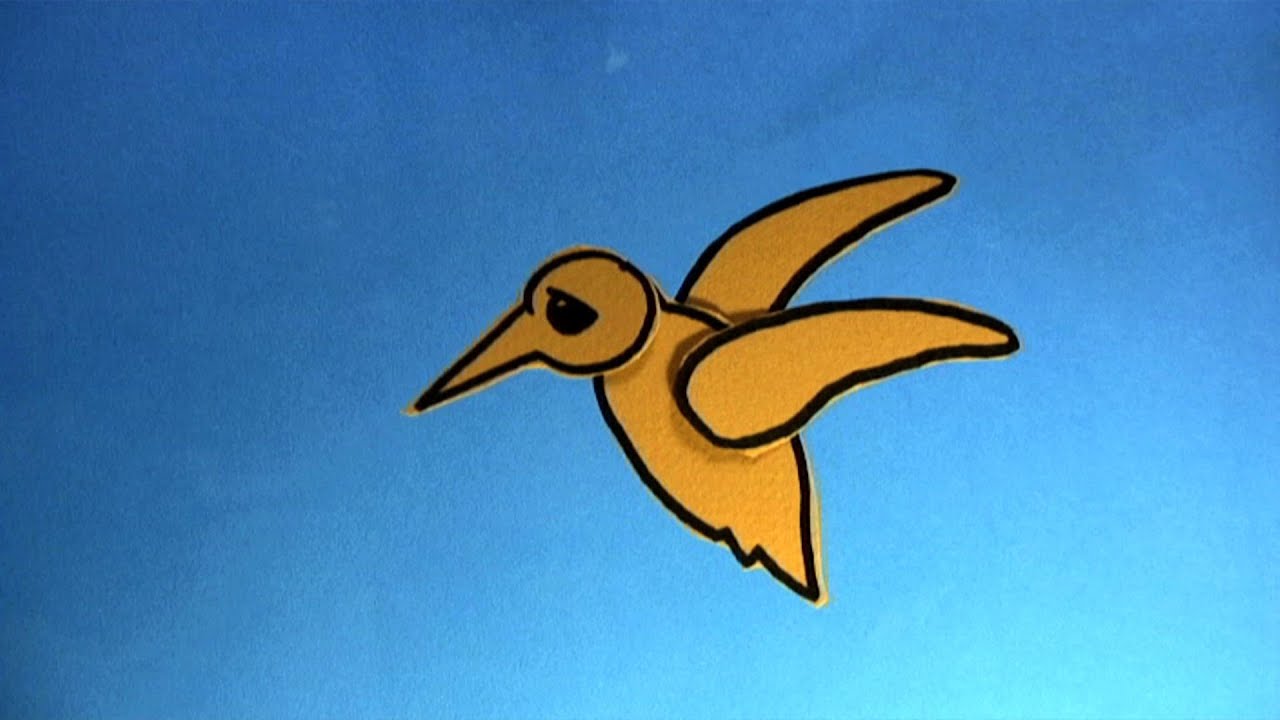How to Animate a Bird Flying | Stop Motion
Full Playlist: https://www.youtube.com/playlist?list=PLLALQuK1NDriZ7JgmfxOc40hRTnYSt6Gx
–
–
Watch more How to Do Stop Motion Animation videos: http://www.howcast.com/videos/514883-How-to-Animate-a-Bird-Flying-Stop-Motion
So we’re going to animate a flying bird. As with so much in the stop motion realm, there are different approaches we can take. We’re going to animate our flying bird with a paper cutout style, using our multi-plane to give us two layers, a layer for our sky and the layer for our bird to fly on, and we’ll be shooting with our camera pointing down, of course. This is a great way to make birds fly, to make fish swim, because you’re taking the gravity thing out of the equation.
You don’t have to rig your bird up. You don’t have to shoot it in front of a green screen and composite a sky in later. You can simply lay it all down in your layers and fly them this way. So here we go. My bird puppet is made up basically of four parts. I have a body cutout, which I will lay down here. I have a cutout for his head, very, very simple, an eye, a beak. And I have two wing cutouts, which I’ll just place right there. In some cases, you can put your paper puppets together with brass fasteners or thread and tape. Because this is a very basic puppet in just four pieces, we’re going to go without any connections. We’ll just keep them together and animate him, and make sure his parts do not fly away from each other. We’re going to start our bird off out of frame. Take a few frames of just the sky.
And now we’ll enter our bird. He will come in beak first just like that. I see the edge of the beak at the bottom of the frame there. Here he comes. When I’m animating the bird, I’m using my fingers very gently pulling forward and trying to make sure I’m pulling all of the parts at the same time. We’re going to have him soaring up so to speak. He’ll flutter there for a moment, and then he’ll fly out. As he really starts to enter the frame, you want to make sure you’re getting some sort of a flap on the wings. This can be challenging. Do your best. Consider that you might want to flap up one, two, three frames. Hold it. Then drop your wings back down one, two, three frames. Hold it. And I’ll show you what I mean right here. So here he comes. He’s flying in. We’re going to bring both of these wings up a little more. And we’re going to have them beat down now as he gets even higher.
And because he’s not flapping anymore, we’ll drop him just a little bit. And we’re going to drop him a bit more as we bring those wings down, or rather up, bringing the wings up a little bit more, dropping him down. The challenge is that you don’t put your fingerprints on the multi-plane. You don’t want to see this plexiglass level at all. And the other challenge is that you’re moving and isolating these parts in a sensible way so that it looks like your bird is flying. Maybe just tremble him back and forth for a moment, hovering up there in the blue paper sky. And he’s going to go. I’m going to do a nice, swift exit. We’re going to bring his wings behind him, point that head toward the sky. He’s heading south or west. Who knows? He’s going away. And we’ll increase the size of the movements a little bit, and that will increase the speed of his movement in the film. There’s always that moment before you play your animation where you think, “Did it work?” Let’s see if it worked. Let’s see if it worked. He flies in. And he goes out. I think it worked. Try this at home. Draw your bird. Cut it out. Make it fly.



![[ID: 8P5xtEkicoM] Youtube Automatic](https://okumasaati.net/wp-content/uploads/2020/10/id-8p5xtekicom-youtube-automatic-360x203.jpg)
![[ID: 9iWUv19ufcA] Youtube Automatic](https://okumasaati.net/wp-content/uploads/2020/10/id-9iwuv19ufca-youtube-automatic-360x203.jpg)
![[ID: D1WUndZJtNE] Youtube Automatic](https://okumasaati.net/wp-content/uploads/2020/10/id-d1wundzjtne-youtube-automatic-360x203.jpg)
![Private: [ID: 22dtpKetCc0] Youtube Automatic](https://okumasaati.net/wp-content/uploads/2020/10/private-id-22dtpketcc0-youtube-a-360x203.jpg)
![[ID: WpwK_Kk5QXY] Youtube Automatic](https://okumasaati.net/wp-content/uploads/2020/10/id-wpwkkk5qxy-youtube-automatic-360x203.jpg)
![[ID: wffPwC8E7l4] Youtube Automatic](https://okumasaati.net/wp-content/uploads/2020/10/id-wffpwc8e7l4-youtube-automatic-360x203.jpg)